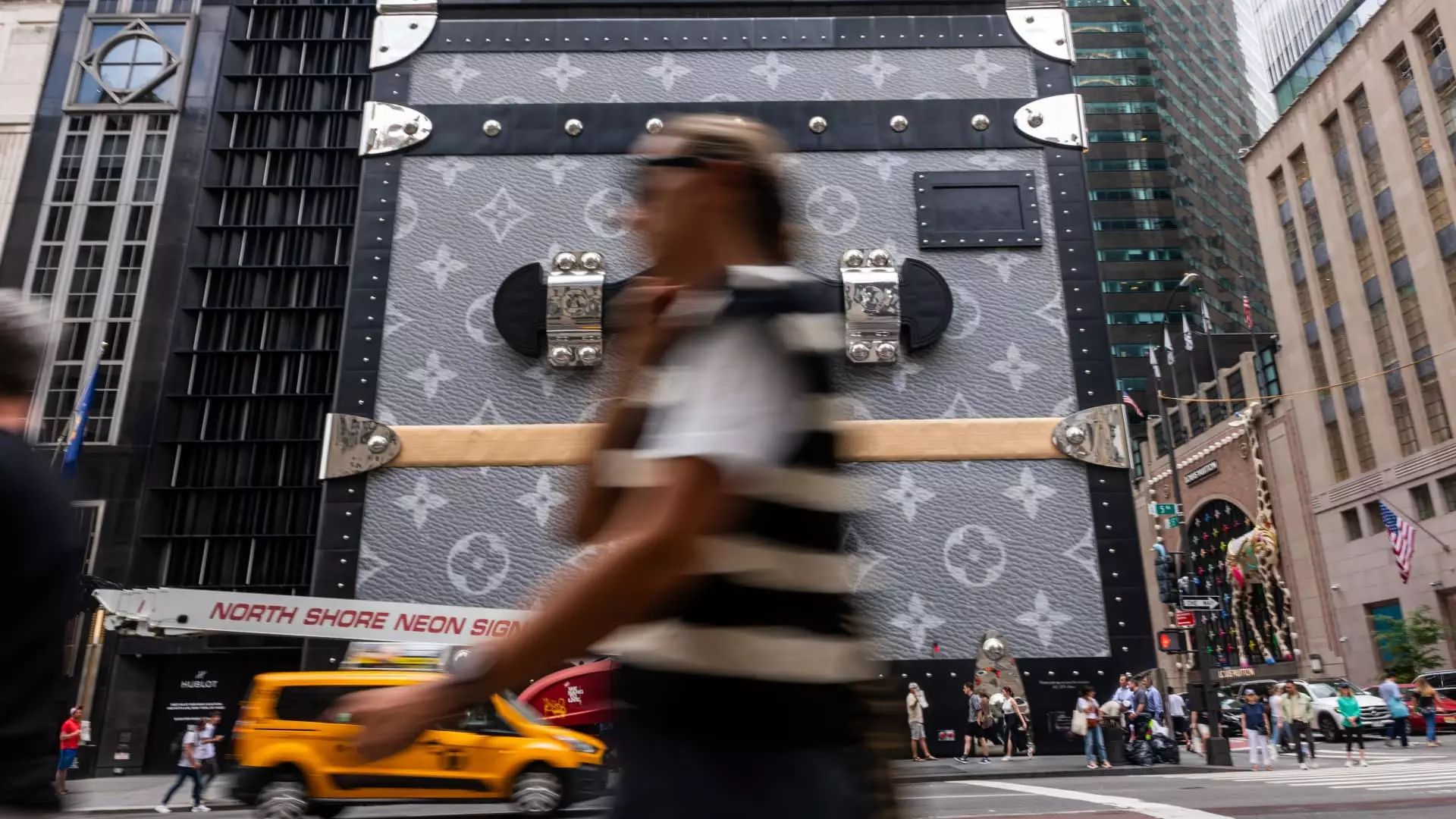The luxury sector’s recent performance disguises a more troubling reality. Despite some promising signs, such as the cautious optimism surrounding LVMH’s modest sales decline, the industry’s outlook remains precariously balanced on the edge of uncertainty. The narrative of a genuine recovery is overly optimistic; beneath the surface, fundamental issues threaten to undermine any perceived resurgence. The luxury market has historically been a barometer of economic stability, yet current signals suggest a landscape characterized more by resilience in disguise than authentic growth. Investors should approach these so-called “green shoots” with skepticism rather than optimism, recognizing that the sector’s intricate dynamics are still heavily influenced by external shocks and internal vulnerabilities.
Foreign Exchange Fluctuations: A Double-Edged Sword
One of the most persistent and underappreciated challenges facing luxury brands today is currency volatility. The Japanese yen’s sharp decline initially propelled a surge in tourism-driven sales, creating the illusion of growth. However, this was more a symptom of shifting macroeconomic conditions than sustainable demand. As the yen rebounded, brands like Richemont and Burberry found themselves grappling with sharp declines in their Japanese markets. This pattern underscores a broader truth: foreign exchange fluctuations introduce a level of unpredictability that complicates long-term planning and erodes profit margins. The luxury industry’s dependence on global tourism and currency-driven demand leaves it vulnerable to geopolitical and economic upheavals that can swiftly undo any gains made in the wake of currency shifts.
U.S. Market: A Mirage of Demand or Premature Frontloading?
While U.S. sales figures have shown some improvement, the true nature of this uptick remains ambiguous. Are American consumers genuinely embracing luxury regardless of economic turbulence, or are they simply rushing to purchase in anticipation of tariffs and future price hikes? This distinction matters profoundly for the sector’s health. If the spike in demand is primarily driven by preemptive buying rather than robust, organic growth, the industry faces a sobering reality: a potential post-tariff slump that could erode recent gains. Furthermore, U.S. luxury consumers are increasingly diverse—ranging from high-net-worth individuals to mall walkers—yet brands continue to rely heavily on the U.S. market to compensate for stagnation elsewhere. This strategic pivot risks creating a false sense of security that could prove damaging once the winds shift.
Price Hikes: A Band-Aid or a Strategic Move?
Luxury brands are considering raising prices to offset rising costs due to tariffs and inflation, but this approach is fraught with peril. The industry’s signature appeal has long hinged on exclusivity and exceptional craftsmanship, not simply price. Increasing prices risks alienating core customers and undermining the perceived value of luxury goods. While some brands like Brunello Cucinelli and Moncler are implementing modest hikes, the broader strategy appears more reactive than proactive. LVMH’s stance—that price increases should be coupled with product improvements—indicates a recognition that mere inflation adjustments are insufficient to sustain long-term growth. More critically, this reliance on inflation-driven pricing strategies highlights the fragile nature of current demand, which can be easily undermined if consumers perceive value diminishes or if economic conditions tighten further.
Category Dynamics and Consumer Preferences: A Shifting Landscape
The luxury industry’s divided performance across categories reveals much about underlying consumer preferences. Jewelry and high-end watches continue to face headwinds, in stark contrast to leather handbags’ ongoing strength, particularly within the ultra-luxury segment. Brands such as Hermès have demonstrated that product category and brand legacy remain pivotal. However, the temptation of short-term sales gains through category shifts—such as pushing jewelry despite softness—can be a double-edged sword, risking damaging brand consistency and long-term positioning. The industry’s obsession with “newness” and fresh offerings, exemplified by Gucci’s redesign efforts under Demna Gvasalia, underscores an important reality: consumer loyalty is fragile, and fleeting trends may not sustain a genuine recovery. Without a clear understanding of genuine demand versus strategic repositioning, the sector’s optimistic outlook risks being a mirage—an image crafted more by marketing than by sustainable economic fundamentals.
A Cautiously Skeptical Outlook on Luxury’s Future
Despite the surface-level optimism surrounding recent earnings reports, it is essential to examine the broader implications of these developments critically. The luxury sector’s dependence on currency movements, geopolitical factors, and short-term tactical pricing strategies makes its recovery highly vulnerable. The industry’s current resilience is more a function of temporary distortions—such as currency fluctuations and pre-tariff buying—than a foundation for sustained growth. A truly healthy luxury market must navigate a complex web of supply chain challenges, shifting consumer values, and macroeconomic volatility. Until these issues are addressed convincingly, any claims of a robust recovery should be viewed with a healthy dose of skepticism, recognizing that the luxury sector remains a fragile mirage, vulnerable to dissolving under the weight of its internal contradictions and external pressures.

